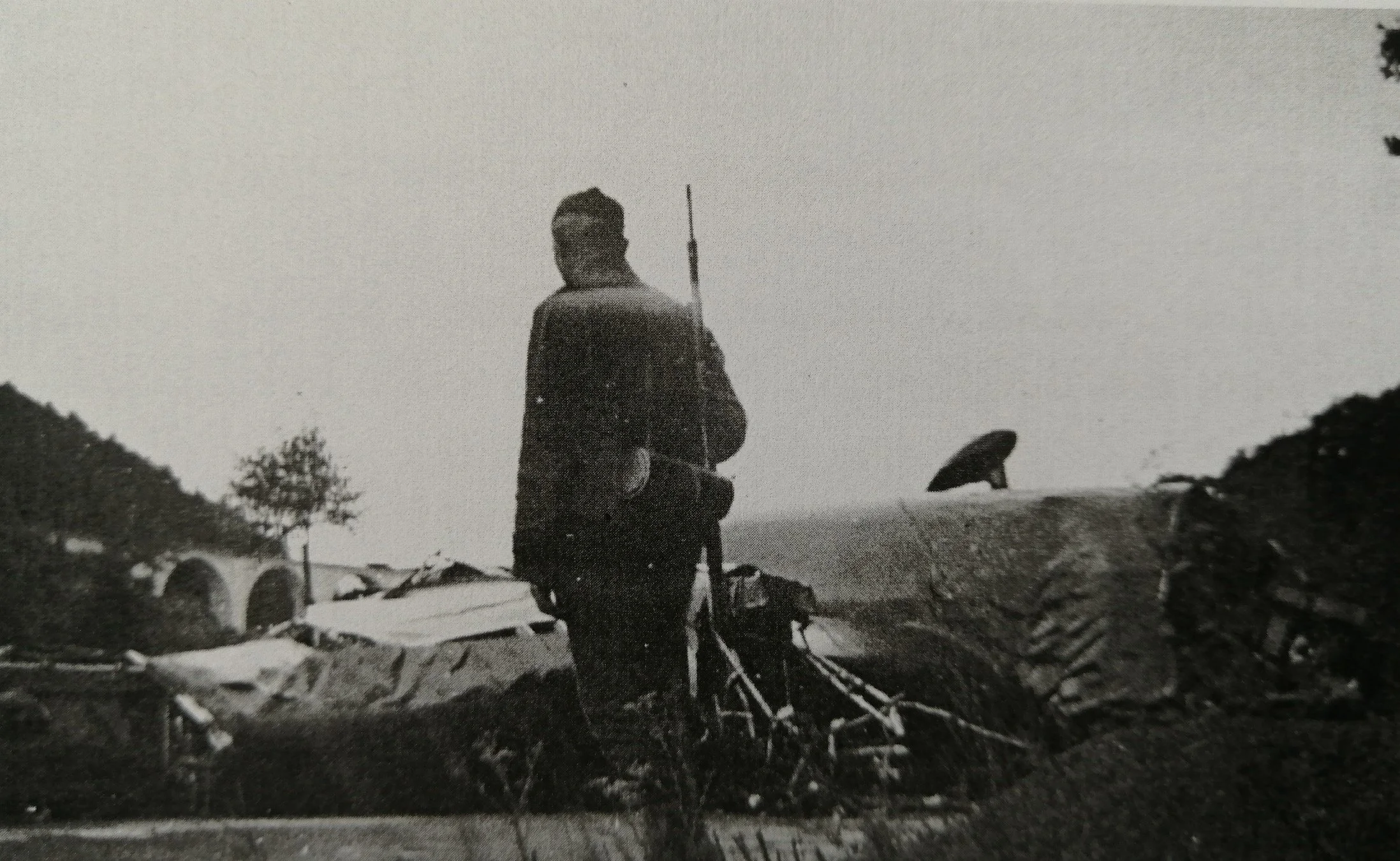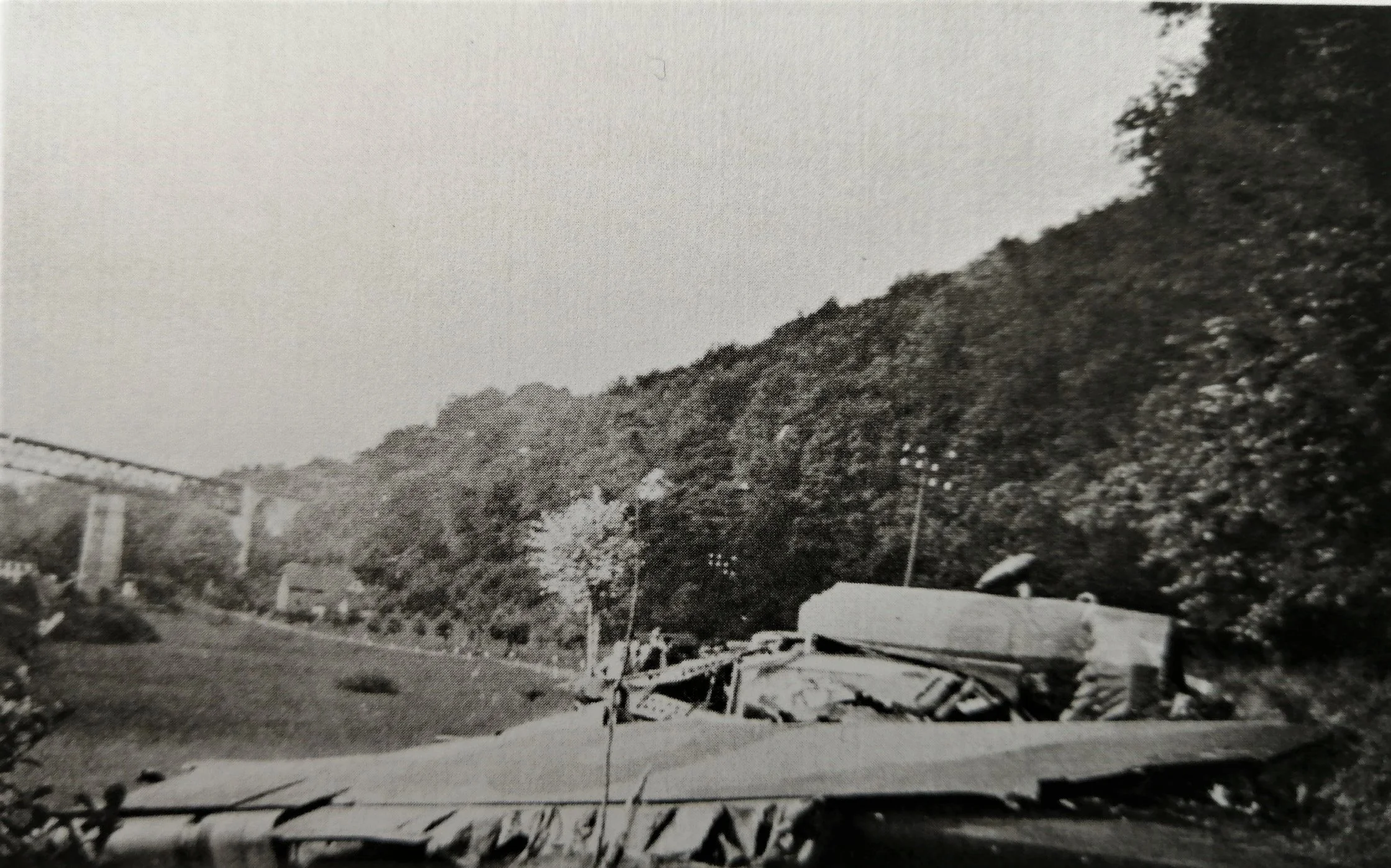Supporting the College
Annual Giving is raising funds for Centenary Appeal scholarships which will commemorate each of the 14 young Georgians who died in service during the Second World War, ensuring that their sacrifice will be remembered in perpetuity. The first two scholarships, in memory of Ted Parsons (1937) and Syd Rowe (1934), were awarded for the first time in March 2024. Ted and Syd’s stories can be found on our web site here: https://stgc.uwa.edu.au/georgian-war-service
This year we are raising funds towards a scholarship in memory of Guy Ward (1940). On 11th August 1943, Guy was the pilot of a Halifax bomber on his tenth operational flight over Germany when the aircraft was shot down over Nuremburg, some time after midnight. He was last seen by the two surviving members of his crew, still in his machine, before they baled out. The aircraft crashed at Ramsen, Germany - six of the eight crew were killed, including Guy, who was only 21 years old. More of Guy’s moving story can be found at the bottom of this page.
100 TIL 100
THE COLLEGE TURNS 100 IN 2031 - please consider becoming a member of the $100 ‘TIL 100 Annual Giving Program. In other words – a gift of $100 each year until the College’s Centenary in 2031. The College came into being through an extraordinary gift from Sir John Winthrop Hackett. Its further development has been assisted by major donors such as Bert Arcus (1942), Berwine and Irwin Barrett-Lennard (1948), David Newby (1962), and John Rodgers (1956). Major donors will always make a tremendous difference. The power of many small gifts, however, can emulate that of our major donors. Together we can make a great difference.
Making a Donation
To make a donation:
Make a secure donation online by credit or debit card
Electronic Funds Transfer (EFT) can be made (within Australia) to BSB :706 001; Account number: 3000 5962
Please use “AG” [for Annual Giving] or “Donation” [for other donations], and your surname and initial as referenceCHEQUES can be made out to ‘St George’s College Foundation’ and posted to us (46 Mounts Bay Rd, Crawley WA 6009)
Contact us on +61 8 9449 5555 to make a donation over the phone or to discuss other options
Every donation is welcomed and appreciated. All donations are tax deductible in Australia and the USA and we can benefit from Gift Aid from the UK. For more informtion please contact the College Foundation by email or call +61 8 9449 5555 .
If you would like to discuss donating to the College, please feel free to call or email us.
We need your support for Annual Giving.
Your contribution will help us achieve our pivotal goals by our Centenary in 2031 and provide life-changing opportunities for students who, without your support, will not otherwise be able to attend and to benefit from College.
Your generosity secures the long-term future of the College and residents to come. The College receives no state or federal government support.
We encourage you to see below to learn about Guy Ward (1940) and to make your gift if you are in a position to do so.
Your Support
Annual Giving 2025: Guy Ward Scholarship
Warrant Officer Guydon Whitfield Ward (1921 -1943)
Guydon Whitfield Ward was the only son of Dr Harold Whitfield Ward, a general practitioner in York, and his wife Helen Yetna Ward. He was educated at Hale School where he was a boarder from 1935 to 1939. At Hale he was a prefect, captain of the boarding house and a leading sportsman, being a member of the 1st cricket, football and swimming teams. He is remembered at Hale through the Guy Ward Memorial Prize, awarded annually to the boarder who has shown the most outstanding leadership qualities throughout the year.
He decided to follow his father into medicine, and entered St George’s in 1940, enrolling in science (medicine) at The University of Western Australia. After just one year of his studies he enlisted with the Royal Australian Air Force (RAAF) in 1941, aged 19 years and eight months, and trained as an RAAF pilot at Cunderdin. He gained his wings on twin-engine aircraft at Geraldton, and then travelled to England where he was posted to No. 102 Squadron, Royal Air Force, to flyer Halifax Bombers.
This Bomber Command squadron had been re-equipped with Halifaxes in 1942, and took part in each of the three historic “1,000 bomber” raids in May and June that year. On 7th August the squadron moved to Pocklington, a classic English market town at the foot of the Yorkshire Wolds about 24km from the City of York, which was to be its home for the rest of the war. While the raid on Nuremberg was not as large as the psychologically-important 1,000 bomber raids, 653 aircraft took off on the night of 10th August for the flight to Germany.
This was no small force. It effectively comprised Britain’s entire force of front-line bombers. The 1,000 bomber raids had used the front line, the reserve and the training squadrons in order to find enough aircraft, but once “Bomber” Harris had proved his point – the 30th May raid on Cologne had wreaked more damage than the previous 70 bombing raids to Germany combined – it became standard for Bomber Command to commit all its front-line resources to each major raid.
The newly-formed Pathfinders had attempted to ground-mark the city and, although their markers were mostly obscured by cloud, the central and southern parts of the city were successfully bombed. During the aerial battle, Bomber Command lost six of its 318 Lancasters, seven of its 216 Halifaxes and three of the 119 Stirlings. The loss rate of just under 2.5 percent was about half that of normal missions.
Guy was the pilot of a Halifax bomber on his 10th operational flight over Germany when the aircraft was shot down over Nuremburg, some time after midnight. With him on that fateful flight were seven other crew members – six British servicemen and one Canadian. He was last seen by the two surviving members of his crew (the navigator and radio operator) still in his machine when they baled out at 3,000 feet, and as prisoners of war at Dalag they were told by the interrogation officer that Guy had not survived. When hit by enemy fire, it was normal for pilots to continue flying for as long as possible while the rest of the crew baled out, and many lost their lives as a result. Typically, a German night fighter would attack a bomber from behind and below, first taking out the tail gunner, and then aiming for one of the two wing tanks. If successful, the wing tank would catch fire and the bomber would fall in a spiral, making abandonment particularly difficult.
Guy and his five crew members were buried in Ramsen and after the war they were moved to their final resting place in the Commonwealth Military Cemetery in Rheinberg.
The RAAF had already decided to promote Guy from Sergeant to Warrant Officer, but the news had not got through to his RAF squadron. When it was finally determined that Guy had been lost, the promotion was made retrospective to 11th June 1943.
A memorial service for Guy was held at the College Chapel on 20th October, 1944. A copy of the service was sent to his father and mother in York, for which they expressed great gratitude.
Guy’s mother wrote to the Warden Josh Reynolds: “My husband and I went across to the church here that day…and took roses from our own garden, and placed them at the foot of the altar, for the unknown grave so far away.
He went freely, gladly and then gloriously. After all, at least nothing can harm him now.”
--oOo—
“He had about him as an undergraduate a certain cool courage, command of the situation and command of himself. He was gifted in his ability to view things in a detached way, and to supply the reasonable and sound solution. He had an easy charm of personality, an engaging smile and a spark of fun, all of which won him many friends. He was the man who was ready to do a job which had to be done, without thought of the cost.”
The Dragon, 1944 (attributed to Josh Reynolds)
Post Script
The IG Heimatforschung Rheinland-Pfalz (Rhineland-Palatinate Local History Research Group) is a group of volunteers and historians who research the history of the Palatinate region of Germany from prehistorical times up to the Second World War. Their modern era research includes locating forgotten crash sites of WWII aircrafts. Led by Erik Wieman, a Dutchman living in Germany, they are dedicated to telling the stories of those lost at war. In 2020 they were notified of Guy Ward’s crash site, and they were able to speak to two eyewitnesses who could tell them more about the crash. A memorial at the crash site is planned for next year. More information about this can be found here: https://www.ig-heimatforschung.de/luftkrieg/halifax-jd369-ramsen/
Photos below L-R: Guarding the plane wreckage; a Halifx bomber; wreckage of Guy’s plane






